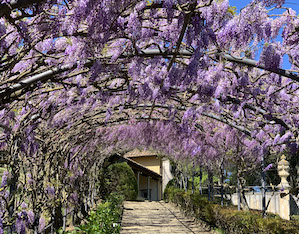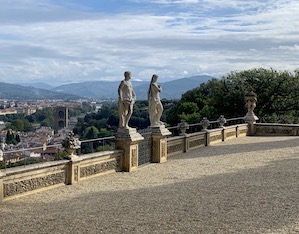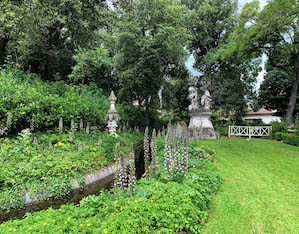From a narrow medieval street in the Oltrarno district, visitors climb winding avenues or an 18th-century staircase to the top of the Bardini Gardens and its spectacular views out over old Florence.
The garden has two separate sections: one to the east, one to the west. The first garden, immediately behind the 13th-century palazzo that originally belonged to the Mozzi family, evolved out of vegetable gardens on a system of 18th-century terraces built into the steep slopes of Montecucco Hill, starting with the Terrace of Vertumno and Pomona, which is adorned with 18th-century statues and busts, continuing via a Baroque staircase that runs across sloping lawns and ending to the west in a wall decorated in graffito technique, with four niches containing rustic mosaics. The Scalinata leads to a wide terrace belvedere that looks out over the Santa Croce district, on the top of a hill bordered by one of the few remaining sections of Florence’s 14th-century city walls, at a point known as the “Torre della Ginevra”. Designed by Gherardo Silvani, the garden’s western sector was developed as an annex to the villa in the second half of the 17th century for Giovan Francesco Manadori. In 1817, French industrialist Jacques-Louis Le Blanc acquired the property and transformed this part of the garden into an Anglo-Chinese style park. In 1913, antiquarian Stefano Bardini purchased the two properties and had them knocked together to house his valuable art collection, using the former Villa Manadori as his residence. In 1998, the villa and its gardens became state property. Since then, they have been managed by the Ente Cassa di Risparmio di Firenze.




